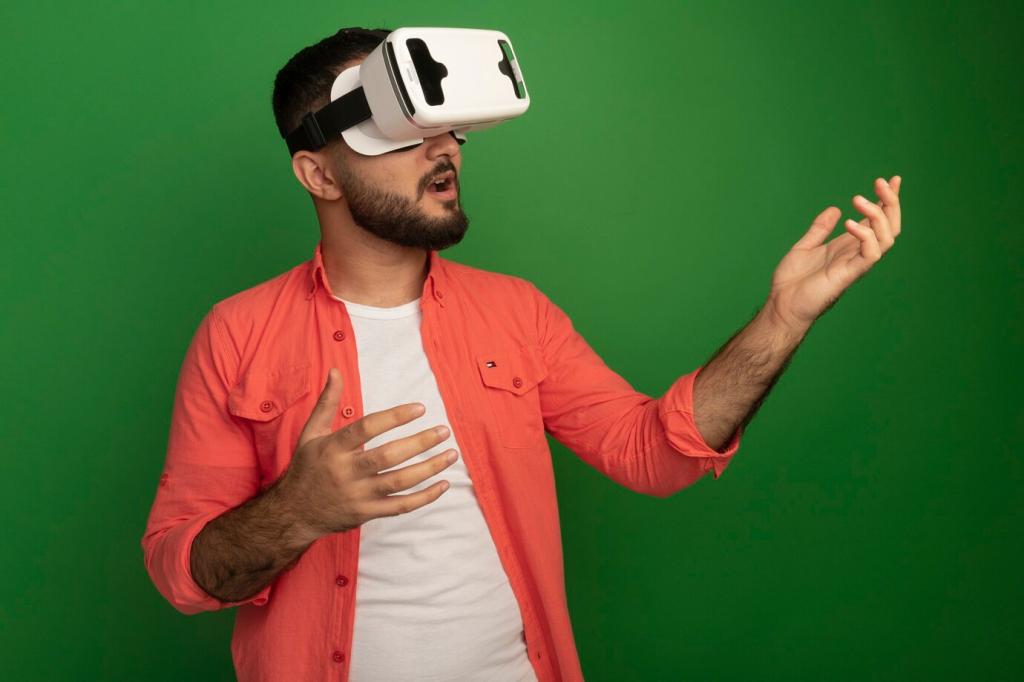
Historical Milestones in Educational AR Technologies
Augmented Reality (AR) has dramatically transformed the educational landscape over the past few decades. By overlaying digital content onto the physical world, AR technologies have enhanced the way learners interact with subjects, making abstract concepts more tangible and interactive. The history of educational AR is marked by significant milestones that have pushed the boundaries of what is possible in teaching and learning environments. This page explores key moments and innovations that have shaped the evolution of educational AR, highlighting groundbreaking software, hardware advancements, and influential research that collectively contributed to today’s immersive classroom experiences.
Previous
Next
Early Foundations of AR in Education
The earliest explorations of AR in education can be traced back to the late 1990s and early 2000s. During this period, universities and research institutions began launching projects to assess how overlaying virtual objects onto the real world could support learning. Pioneering researchers, such as those at MIT and the University of Washington, developed initial prototypes demonstrating how AR could facilitate hands-on experiences in engineering, science, and language learning. These initial forays, though constrained by hardware limitations, showcased the power of contextual feedback and interactivity for student engagement.
Mainstream Emergence and Accessibility
01
The proliferation of smartphones and tablets fundamentally changed the AR education landscape. With integrated cameras and advanced processors, these devices became ideal platforms for deploying AR applications. Startups and publishers began to create engaging AR experiences accessible to students worldwide, without specialized hardware. Children and educators could, for the first time, access interactive AR lesson materials directly from their personal devices, leading to increased adoption and the development of new pedagogical strategies.
02
Recognizing the educational impact of AR, major publishers started embedding AR capabilities within textbooks and supplementary materials. By scanning pages with a smartphone or tablet, students could see 3D models, videos, and animations superimposed over printed content. This innovation enriched static learning materials with interactive experiences and deeper insights into subjects like biology, chemistry, and history. The collaboration between technology developers and educational publishers marked an essential milestone in scaling AR’s reach to millions of students.
03
With increased accessibility came a broader application of AR across subjects. Educators extended AR beyond STEM disciplines to arts, language learning, and vocational training. Creative projects allowed students to visualize literature, practice foreign languages in immersive scenarios, and simulate real-world job tasks. This expansion demonstrated AR’s versatility as a learning tool that could adapt to diverse teaching goals, fostering curiosity and collaboration across age groups and educational levels.
Technological Innovation and Enhanced Interactivity
Markerless AR and Computer Vision Advances
The shift from marker-based to markerless AR was a critical development. With improvements in computer vision and spatial mapping, AR applications could now recognize and interact with real-world objects and environments without the need for physical markers. This enabled more flexible, naturalistic learning experiences, such as overlaying information on laboratory equipment or historical artifacts during field trips. Educators could now design lessons that adapted dynamically to students’ real-world surroundings, making learning more relevant and immediate.
Cloud-Based Collaboration Tools
Cloud technology revolutionized AR by facilitating real-time collaboration among students and teachers. AR platforms began supporting shared experiences, where multiple users could interact with virtual objects simultaneously from different locations. This innovation paved the way for remote, blended, and hybrid learning environments, especially during global disruptions such as the COVID-19 pandemic. By breaking down physical and geographical barriers, these tools demonstrated how AR could foster inclusive, interactive educational communities.
Enhanced Content Creation Tools
Improvements in AR authoring environments empowered educators and students to become content creators. User-friendly platforms and templates allowed those without programming expertise to design custom AR experiences tailored to curriculum needs. Teachers could quickly build interactive lessons that addressed unique classroom challenges, while students developed digital literacy skills by crafting their own AR projects. This democratization of content creation accelerated AR’s integration into everyday teaching and learning.
